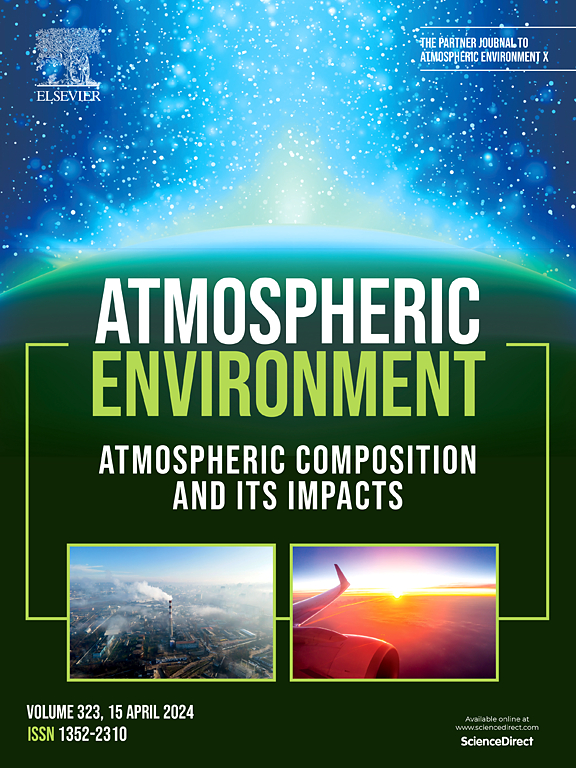Seasonal characterization of primary and secondary sources of fine PM-bound water-soluble organic carbon in central Los Angeles
IF 4.2
2区 环境科学与生态学
Q2 ENVIRONMENTAL SCIENCES
引用次数: 0
Abstract
Understanding the sources and formation processes of fine particulate matter (PM2.5) is crucial for improving urban air quality and public health. This study provides a real-time analysis of PM2.5-bound water-soluble organic carbon (WSOC) and related carbonaceous species during winter, spring, and summer periods in 2023–2024, aiming to identify their major sources in central Los Angeles. Using advanced online monitoring equipment, including a Sunset Laboratory EC/OC analyzer and a custom-developed setup including a total organic carbon (TOC) analyzer coupled with a particle collection system, we obtained hourly measurements of organic carbon (OC), its fractions (OC1-OC4, based on volatility), elemental carbon (EC), and WSOC. Positive matrix factorization (PMF) identified three principal PM2.5 sources: vehicular emissions, secondary organic carbon (SOC) formation influenced by nighttime aqueous-phase chemical processes, and SOC formation driven by daytime photochemical reactions. Vehicular emissions dominated EC levels, accounting for 86–95% across seasons. This factor also had high contributions from nitrogen oxides (NOₓ) (75–82%), vehicle counts (approximately 85%), and OC1 (51–83%), reflecting the persistent influence of traffic emissions. Nighttime SOC formation was significant in winter, with WSOC and OC4 contributing 58% and 40% to this factor. In contrast, daytime photochemical SOC formation was prominent in summer, with WSOC and OC4 contributing 63% and 47%, and ozone loading up to 89%, reflecting increased photochemical activity. Spring exhibited a mix of aqueous and photochemical SOC formation, with similar contributions from WSOC (38-35%) and OC4 (35-33%), reflecting the transitional season's mixed SOC formation mechanisms. Diurnal profiles revealed that primary emissions peaked during morning rush hours, while secondary formation processes elevated OC levels at night in winter and during afternoons in summer. The EC tracer method corroborated these findings by estimating primary and secondary organic carbon levels, highlighting significant seasonal and diurnal variations in carbonaceous aerosols. These results emphasize the need for targeted strategies addressing both primary emissions and the precursors of secondary aerosol formation, to improve air quality in Los Angeles.
求助全文
约1分钟内获得全文
求助全文
来源期刊

Atmospheric Environment
环境科学-环境科学
CiteScore
9.40
自引率
8.00%
发文量
458
审稿时长
53 days
期刊介绍:
Atmospheric Environment has an open access mirror journal Atmospheric Environment: X, sharing the same aims and scope, editorial team, submission system and rigorous peer review.
Atmospheric Environment is the international journal for scientists in different disciplines related to atmospheric composition and its impacts. The journal publishes scientific articles with atmospheric relevance of emissions and depositions of gaseous and particulate compounds, chemical processes and physical effects in the atmosphere, as well as impacts of the changing atmospheric composition on human health, air quality, climate change, and ecosystems.
 求助内容:
求助内容: 应助结果提醒方式:
应助结果提醒方式:


